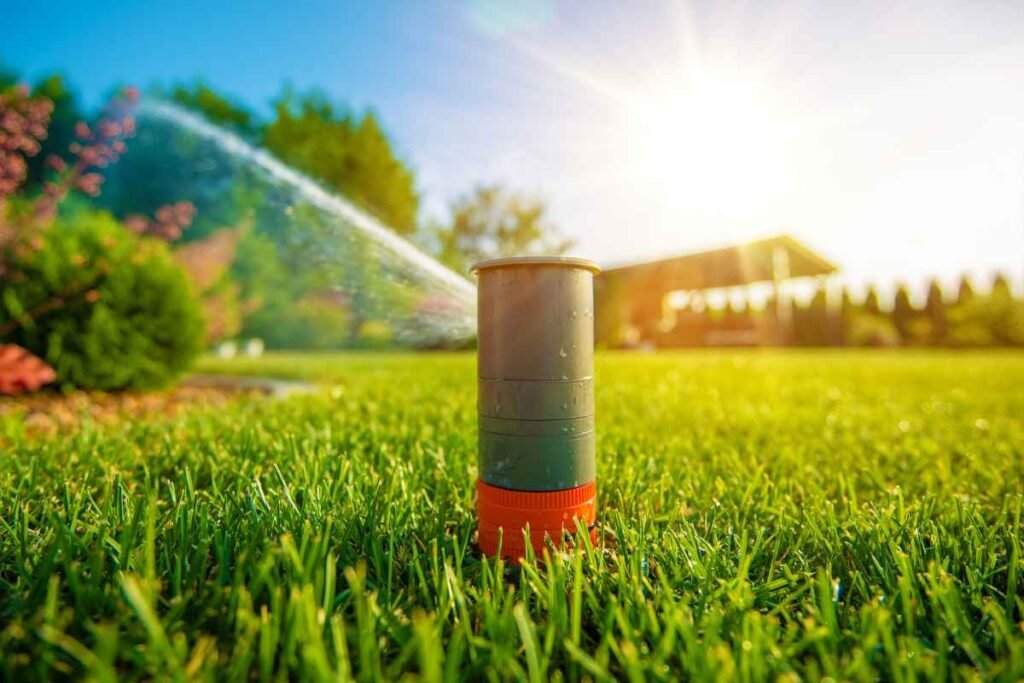As the summer sun climbs higher, our lawns and gardens become a vibrant tapestry of growth and color. However, this season of abundance can also bring unique challenges that test the resilience of our lawns and plant beds. From scorched grass to waterlogged flower beds, the potential pitfalls are many. Understanding and avoiding common lawn and garden care mistakes is crucial for maintaining a lush, healthy outdoor space.
The National Association of Landscape Professionals (NALP) reports that 81% of Americans maintain their lawns themselves. But 69% think their lawn needs repair and 31% say they don’t know how to grow a healthy lawn. We’ve listed 22 lawn and garden care mistakes in summer and offered tips according to Lawn Care Professional, The Agriculture Extension Office of UMN, UC, CSU, NC State University and others. This guide delves into the most frequent missteps made during the summer months and provides practical advice to ensure your garden thrives.
22 Lawn and Garden Care Mistakes in Summer: How To Avoid Them
1. Mowing Mistakes
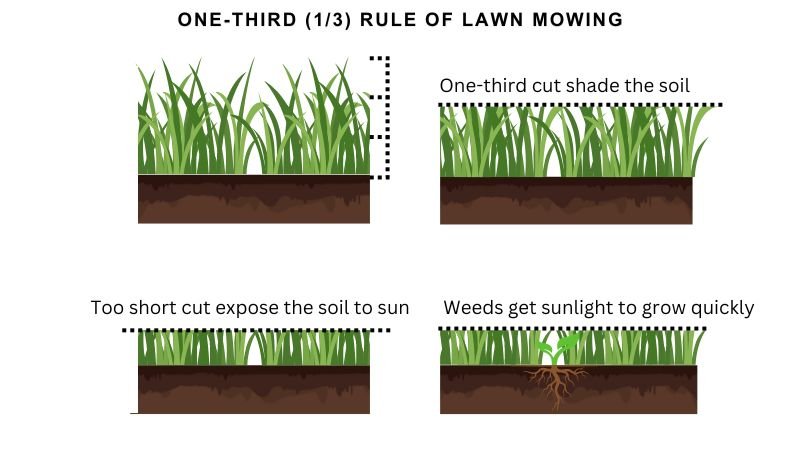
Cutting Grass Too Short
This practice, often known as “scalping,” can severely stress the grass, making it more vulnerable to drought, heat damage, and invasive weeds. Cutting grass too short makes it harder for the plant to use photosynthesis, which happens in the blades, to make energy for growth. Although short grass may seem tidy, it increases the danger of weed invasion and moisture loss by exposing the soil to more sunlight. Higher grass blades shade the soil and roots, reducing water loss and keeping the roots cooler. To avoid this issue, it’s advisable to follow the “one-third” rule: never cut more than one-third of the grass blade length at a time. Set your mower blade to cut grass no shorter than 3 inches.This allows the grass to maintain its health and resilience against environmental stresses.
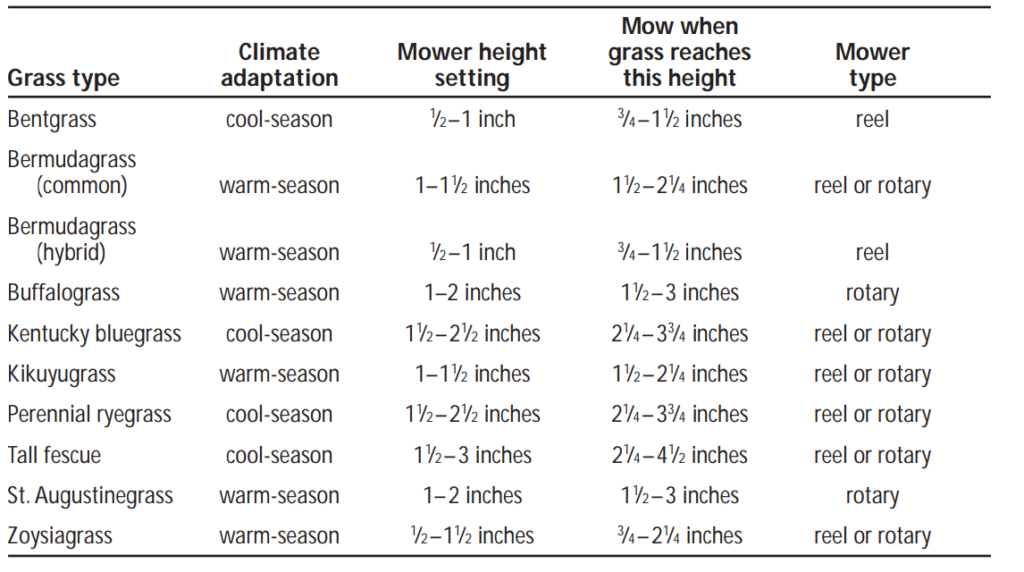
Ignoring Mower Blade Sharpness
Dull blades tear rather than cut the grass smoothly, resulting in jagged edges that brown at the tips and making the grass more susceptible to diseases and pests. These ragged cuts also stress the grass, making it more difficult to recover and thrive in the hot summer months. To avoid this, sharpen mower blades on a regular basis—at least once every season or after approximately 25 hours of operation. For best results, examine the blades every time you mow for signs of dulling or damage. Sharpening the blades is frequently a simple DIY project with the correct tools, or you may take them to a professional for service.
Grass clippings when mowing lawn
Leaving large clumps of grass clippings on the lawn after mowing is a common mistake that can harm your lawn’s health, particularly during the hot summer months. Small clippings decompose and return nutrients to the soil, while large clumps can suffocate the grass, limiting light and oxygen and causing yellow spots or fungal diseases.
You should mow regularly so that just one-third of the grass blade is removed at a time, which keeps clippings tiny enough for decomposing quickly. Rake or bag clippings if they are too long or if the lawn is moist and clumps form. Alternatively, mowing the lawn when it is dry and using a mulching mower can help distribute the clippings more evenly. This approach cleans your lawn and recycles grass nutrients for healthy growth and sustainability.
2. Watering Woes
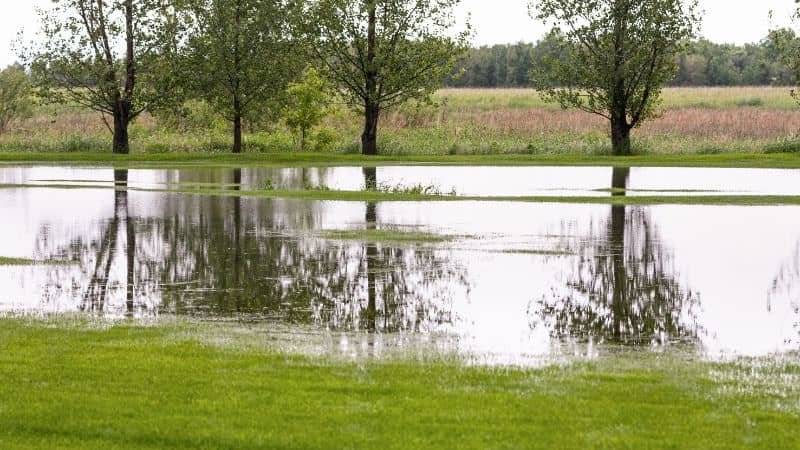
Overwatering
Overwatering your plants might have the same negative effects as underwatering them. Many gardeners believe that more frequent watering is necessary in the summer, but this can drown and deplete plant roots of oxygen. Overwatering causes root rot, weed growth, nutrient leaching, less ability to access deeper water sources during dry spells, and increased insect and disease risk. It causes shallow root systems, reducing drought tolerance and lawn health.
It’s essential to understand the specific water needs of your plants and adjust accordingly based on weather conditions. It’s crucial to water the lawn efficiently by providing just enough water to penetrate the soil deeply without causing runoff. Typically, lawns need about one inch of water per week, either from rainfall or irrigation. To ensure that you’re not overwatering, use a rain gauge to measure the amount of water your lawn receives and adjust your watering schedule accordingly.
Utilize a soil moisture meter or simply check the soil moisture manually; the soil should be moist, not soggy, a few inches below the surface. Check soil moisture at a depth of about 2 inches before watering. Use a drip irrigation system to target water directly to the roots and minimize wastage. Consider the type of soil and grass, as well as local weather conditions, to fine-tune your watering practices.
Not Adjusting Watering Schedules
As summer progresses, changes in temperature, humidity, and rainfall can affect your garden’s watering needs. Watering at the wrong time of day can lead to inefficient water use and increased susceptibility to diseases. Watering in the heat of midday often results in significant evaporation before the water can penetrate deeply into the soil. Conversely, watering late in the evening or at night can leave the lawn damp for extended periods, promoting fungal growth and other diseases.
The optimal time to water your garden and lawn is early in the morning, ideally just before sunrise. This timing allows the water to soak deeply into the soil, reaching the roots where it’s most needed, while ensuring the foliage has enough time to dry off during the day. A timer for automatic sprinklers can assist keep your plants hydrated without the hassle of wrong watering schedules. Monitoring weekly weather forecasts and adjusting watering based on expected rainfall and temperatures.
3. Soil and Plant Health
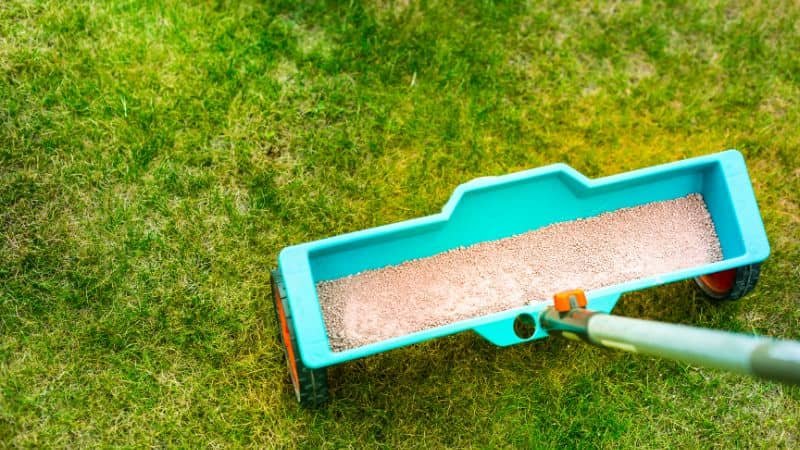
Ignoring soil health
Healthy soil is the foundation of a thriving garden; it nourishes plants, helps retain moisture, and supports root growth. Poor soil health can lead to weak plants that are more susceptible to disease and environmental stress. Gardeners should frequently amend their soil with compost or well-rotted manure to improve structure, aeration, and nutrient availability. A soil test can also reveal the soil’s pH and nutrient levels, enabling specific treatments.
Over Fertilizing
Fertilizer supports plant growth, but excessive use can lead to nutrient burn (known as “fertilizer burn”) and weakened plants. Over-fertilizing during hot weather is particularly risky as plants can absorb more nutrients than they can process. Use a balanced, slow-release fertilizer that provides nutrients over time. Conduct a soil test to determine the specific nutrient needs of your lawn and select a fertilizer that matches these needs. Follow the manufacturer’s instructions carefully to apply the correct amount at the right time.
Using the Wrong Fertilizer or applying it incorrectly
Using the wrong type of fertilizer or applying it incorrectly can lead to nutrient imbalances, weakened plants, and environmental pollution. Each type of plant has specific nutrient needs which vary throughout its growth cycle. If you use a fertilizer that isn’t right for your plant, it might cause burns and other growth problems or starve it of vital nutrients. It’s crucial to choose the proper fertilizer type based on the results of a soil test, which will identify the precise nutrients that are deficient. Fertilizers should be applied according to the manufacturer’s instructions and local weather conditions. For instance, Fertilizing before a heavy rain can wash nutrients away before absorbing, contaminating rivers.
Neglecting Mulch
Mulch plays a critical role in conserving moisture, suppressing weeds, and regulating soil temperature. In summer, mulch helps prevent water evaporation from the soil, thereby providing a constant moisture supply to your plants. You should choose the right type of mulch for your plants. Organic mulches like straw, wood chips, and leaves are great for gardens. Maintain a mulch layer of approximately 2-3 inches. As the mulch breaks down or shifts, replace the layer.
Treating a stressed lawn
Stress in lawns can manifest from various factors including drought, overwatering, nutrient deficiencies, or disease. Simply applying water or fertilizer without understanding the underlying issue can lead to further damage. For instance, overwatering a drought-stressed lawn can cause root rot or fungal growth. It’s important to first determine the specific symptoms and causes of stress. This may involve checking soil moisture levels, examining the color and texture of the grass, and possibly conducting a soil test to assess nutrient needs. After diagnosing the issue, you can alter watering, aerate compact soil, or apply the right fertilizer. A thorough approach to detecting and treating lawn stress aids recovery and strengthens the lawn against future issues.
Use a lot of potting soil each year
Fresh potting soil can give nutrients and structure for plant growth, but adding it without considering the soil’s existing state is wasteful and expensive. Instead of replacing all pot and planter soil each year, gardeners should analyze and adjust it. Remove the top layer of old soil and add compost or a soil amendment to renew and enrich the medium. This cuts waste, costs, and increases gardening sustainability. You can remove root-bound plant parts to improve growth and reduce soil use.
4. Pest and Weed Management
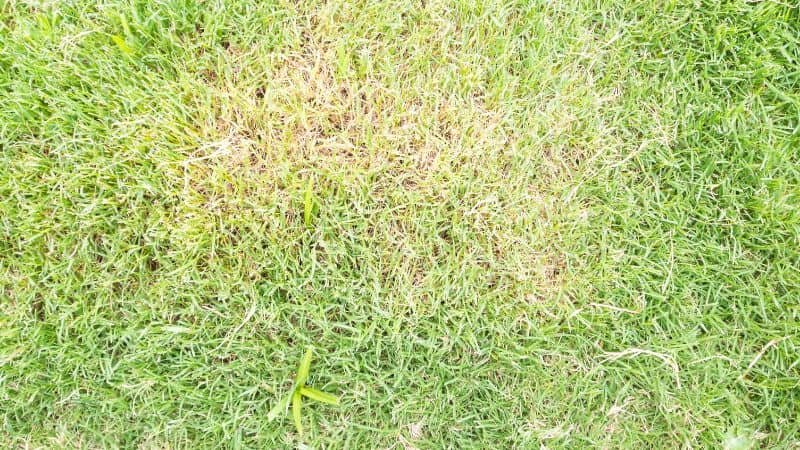
Ignoring Pest and Disease Signs
During the warmer months, diseases and pests such as aphids, beetles, and caterpillars are more active and can quickly infest your garden, causing harm to foliage, flowers, and crops. Regular monitoring is vital to stop this. Regularly check your plants for pest evidence, such as chewed leaves, sticky residues, or living pests. Infestations must be managed early on to prevent further damage. Use integrated pest management techniques, such as introducing beneficial insects that prey on destructive pests (like ladybugs) and using organic insecticides as necessary. Remove infected leaves or plants to prevent the spread of disease. Use neem oil as organic pest control methods.
Neglecting weeds
During the summer, weeds grow rapidly and can quickly overtake a garden if not managed properly. Regular weeding is essential to prevent the problem. To reduce weed spread, treat them early on, ideally before they blossom and set seed. Hand-pulling is effective for small areas and ensures complete removal of the root system, preventing regrowth. For larger areas, consider mulching to suppress weed development; a layer of organic mulch, such as wood chips or straw, can block light, inhibiting weed germination and growth. Using landscape fabric in vegetable gardens or flower beds can serve as a barrier to weeds while allowing water and air to reach the soil. You can use homemade solutions to control weeds. Sometimes you need to use chemical herbicides to control powerful weeds.
5. Planting
Choosing the wrong plants
Many gardeners are drawn to plants’ beauty or uniqueness without considering their area suitability. You must choose plants that thrive in the local climate and soil. This information is usually on plant tags or available from nurseries or agricultural extension programs. Choose plants based on your garden’s microclimate, such as full sun versus partial shade. Native plants are naturally adapted to local conditions and require less water and care.
Planting at the Wrong Time
Timing is crucial when adding new plants to your garden. Planting during a heat wave or the peak of summer can stress new plants, making it hard for them to survive. You should plant in the late spring or early summer to allow plants time to establish before the hottest months. Choose heat-tolerant plants if planting later in the summer. Provide newly planted areas with extra shade and moisture until they are well-established.
Planting too deeply
Gardeners often plant too deeply, which can hamper plant growth in summer when root systems need oxygen. When plants are buried too deep, their roots can’t extend and reach nutrients and water, causing stunted growth or death. To avoid this, ensure that the crown of the plant (where the roots meet the stem) is just at or slightly above the soil surface after planting. For trees and shrubs, make sure the top of the root ball is level with or slightly above ground level.
The general rule for ideal planting depth is to dig a hole two to three times the width of the root ball but no deeper than the trunk flare. According to Colorado State University, the planting hole depth should be 1 to 2 inches less than the height of the root ball. Using a ruler or your hand as a guide can help maintain the correct depth. Properly planting encourages a strong, healthy root system that supports the plant’s overall health and resilience, especially crucial in the stressful summer heat.
Making plant borders too small
Overcrowding and competition for light, water, and nutrients can result from small borders limiting plant growth. Stress can make plants more prone to disease and hinder growth and flowering. Consider the mature size of your plants while designing your garden, allowing each to develop without crowding its neighbors. To accommodate plant growth, leave extra room in plant borders. Plant root systems may need more space underground than above.
6. Pruning
Not pruning correctly
Using the wrong pruning techniques or timing can lead to poor plant growth, susceptibility to diseases, and can reduce flowering or fruiting. During the summer, it’s essential to understand which plants benefit from pruning and the best methods to use. Fruiting trees, spring-flowering shrubs, rambling roses, climbers, evergreens, hedges, and topiary benefit from summer pruning.
You should prune flowering shrubs and trees soon after bloom to avoid cutting off next year’s buds. Deadheading, or the removal of spent flowers, is also beneficial during summer as it encourages plants to produce more blooms. When pruning, always use sharp, clean tools to make clean cuts that heal fast. Avoid excessive pruning during peak summer months because it can stress the plants. Focus on removing dead or diseased branches and thinning out overgrowth to improve air circulation.
Overpruning shrubs
Shrub’s leaf mass is crucial for photosynthesis. Excessive pruning reduces the shrub’s leaf mass and may reduce the plant’s resistance to diseases and pests. This aggressive approach can stress the shrub, leading to poor growth and reduced flowering or fruit production. It’s important to understand the specific pruning needs of each type of shrub. You can prune spring-blooming shrubs before growth begins.
According to UMN Extension, Clematis and shrub roses have stems that aren’t very hardy, you can prune back to living wood. Hardier plants, like spireas that bloom late and smooth (snowball) hydrangeas, should only have their first pair of buds cut off. Only remove dead, damaged, or diseased branches during the summer months. Pruning a shrub during dormancy is preferable for aesthetic shape or considerable size reduction. When pruning in summer remove no more than one-third of the plant’s volume. This precise and controlled pruning will keep the shrub healthy and appealing in your garden.
7. Shade & Sunlight
Ignoring how much sun plants need
Different plants have specific sunlight needs—full sun, partial shade, or full shade. It’s essential to understand the sun requirements for each type of plant in your garden. Carefully read plant tags or research online to determine how much sun each species prefers. When planting, observe your garden throughout the day to identify areas that receive full sun, partial sun, or shade, and plan your plant placement accordingly. If you’ve already planted and notice that a plant is struggling due to too much or too little sunlight, consider relocating it to a more suitable location.
Full Sun (Direct Sunlight Minimum: 6 hours/day, Direct Sunlight Preference: 6 – 10 hours/day): Artichoke, Asparagus (Seed & Crown), Bean (Bush, Lima Bush, Lima Pole, Pole, Scarlet Runner, Yardlong), Belgian Endive (Witloof Chicory), Black-Eyed Pea (Cowpea, Southern Pea), Broccoli, Brussels Sprout, Cabbage, Carrot, Cauliflower, Celeriac, Celery, Corn, Sweet, Cress, Cucumber, Edamame, Eggplant, Fennel, Garbanzo (Chickpea), Garlic, Horseradish, Kohlrabi, Leek, Muskmelon (Cantaloupe), New Zealand Spinach, Onion (Set & Seed), Parsnip, Pea, Pepper, Potato, Pumpkin, Radicchio, Radish, Rutabaga, Salsify, Shallot, Squash (Summer & Winter), Sweet Potato, Tomatillo, Tomato, Ground Cherry (Husk Tomato), Watermelon.
Tolerates Partial Shade/Partial Sun (Direct Sunlight Minimum: 4-6 hours/day, Direct Sunlight Preference: 6 – 8 hours/day): Arugula, Celtuce, Beet, Bok Choy, Chard (Swiss), Chicory (Endive, Escarole), Chicory (Italian Dandelion), Chive, Collards, Kale, Mustard Greens, Parsley, Turnip.
Tolerates Partial Shade but grows well with full sun in Spring and Fall (Direct Sunlight Minimum: 4-6 hours/day, Direct Sunlight Preference: 6 – 8 hours/day): Spinach, Lettuce (Leaf & Head)
Not giving your grass enough shade
Grass typically needs a certain amount of sunlight; on bright, sunny days, excessive sun can stress grass, causing yellowing or brown patches.. While it’s not always possible to shade a full lawn, you can protect it during peak solar hours. Planting shade trees strategically throughout your yard can help grass and improve its beauty and cooling efficiency. Another option is to use shade cloths during the hottest parts of the day, especially for newly seeded or particularly vulnerable areas. Adjusting your lawn care routine by raising the mower blade can help the grass develop deeper roots and retain more moisture, which indirectly aids in coping with sun exposure.
8. Aeration
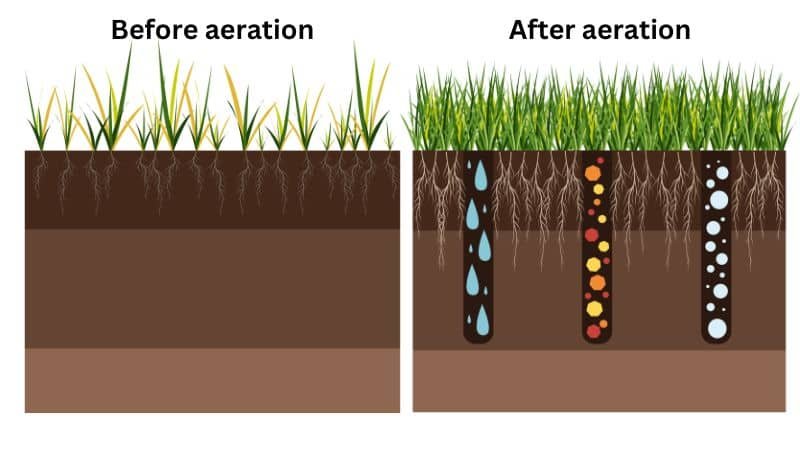
Lack of aeration
Compacted soil restricts the flow of air, water, and nutrients to the grassroots, making the lawn more susceptible to stress and less resilient against heat and drought. Aerating your lawn periodically is crucial, especially if it has heavy clay soil or considerable foot activity. A spike or plug aerator creates microscopic holes in the soil. These steps should be applied during the growing season so the lawn can repair and fill in any open spots. Aeration is preferable in spring or early fall, but warm-season grasses can be aerated late spring through early summer.
Last Words
Successful summer planting requires wise, informed care that prevents typical mistakes. By knowing when to water, how to mow, and which plants to choose, you can help your garden survive in summer. Remember, every move you take can improve your outdoor landscape. With the correct practices, your garden can serve as a personal sanctuary and a bright example of dedicated, intelligent gardening.
Thanks for reading…
